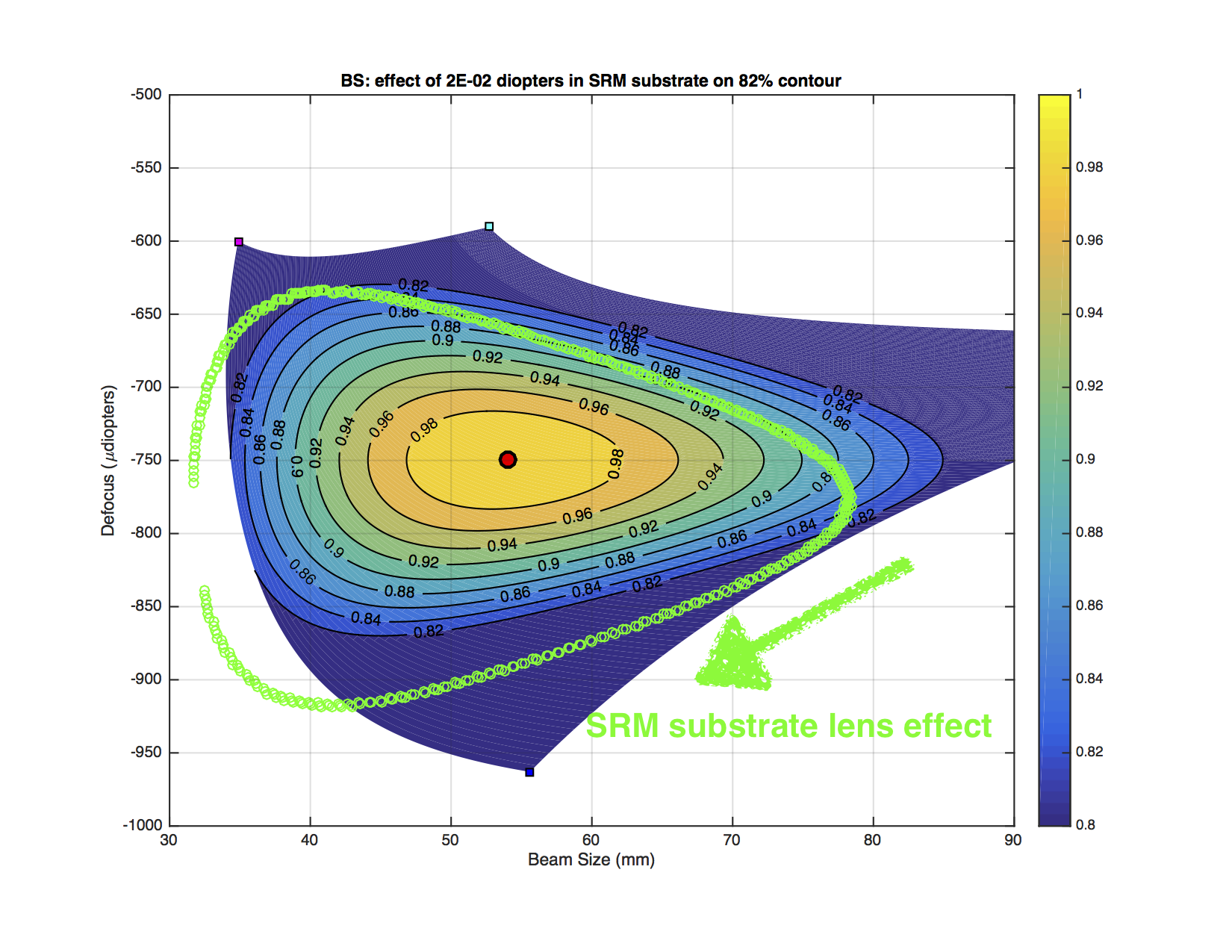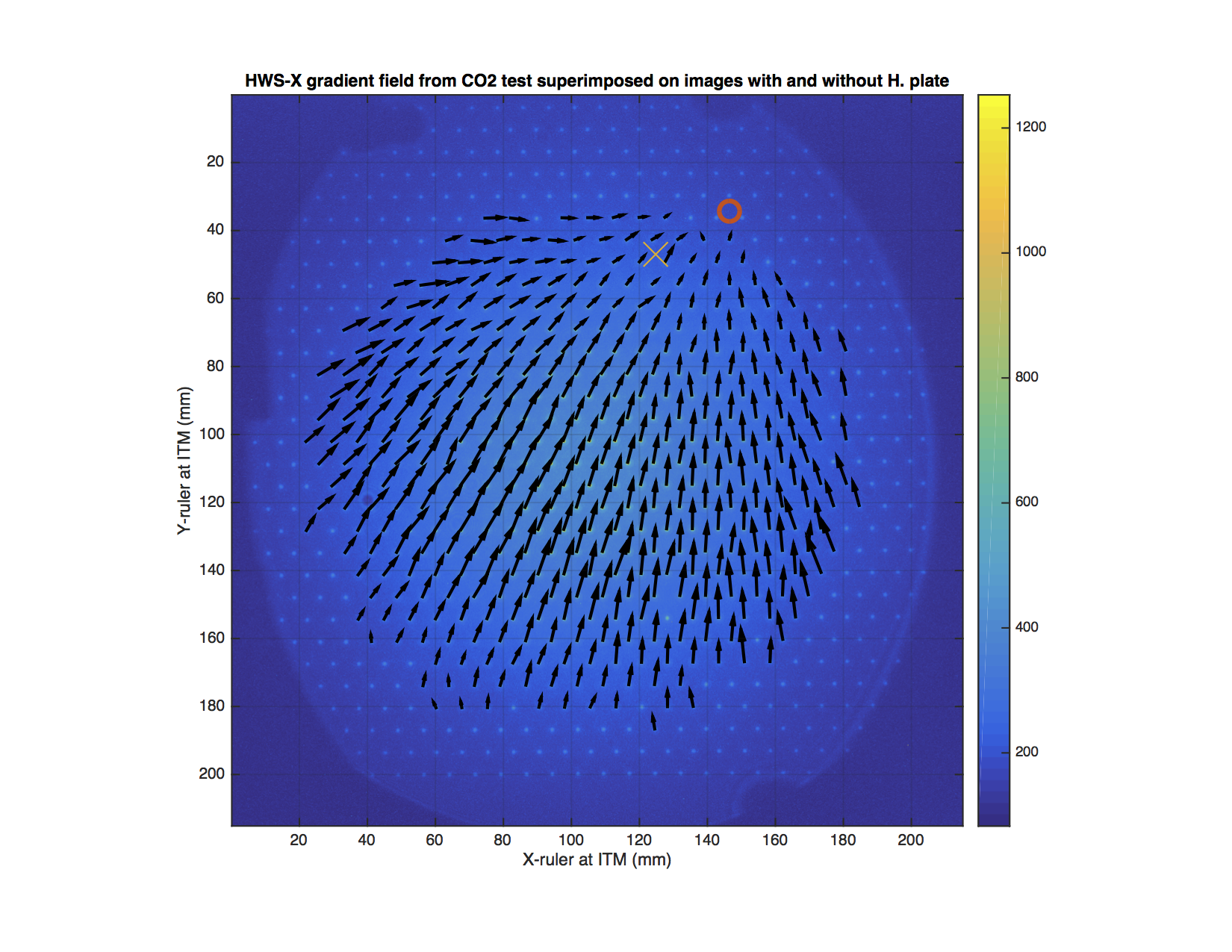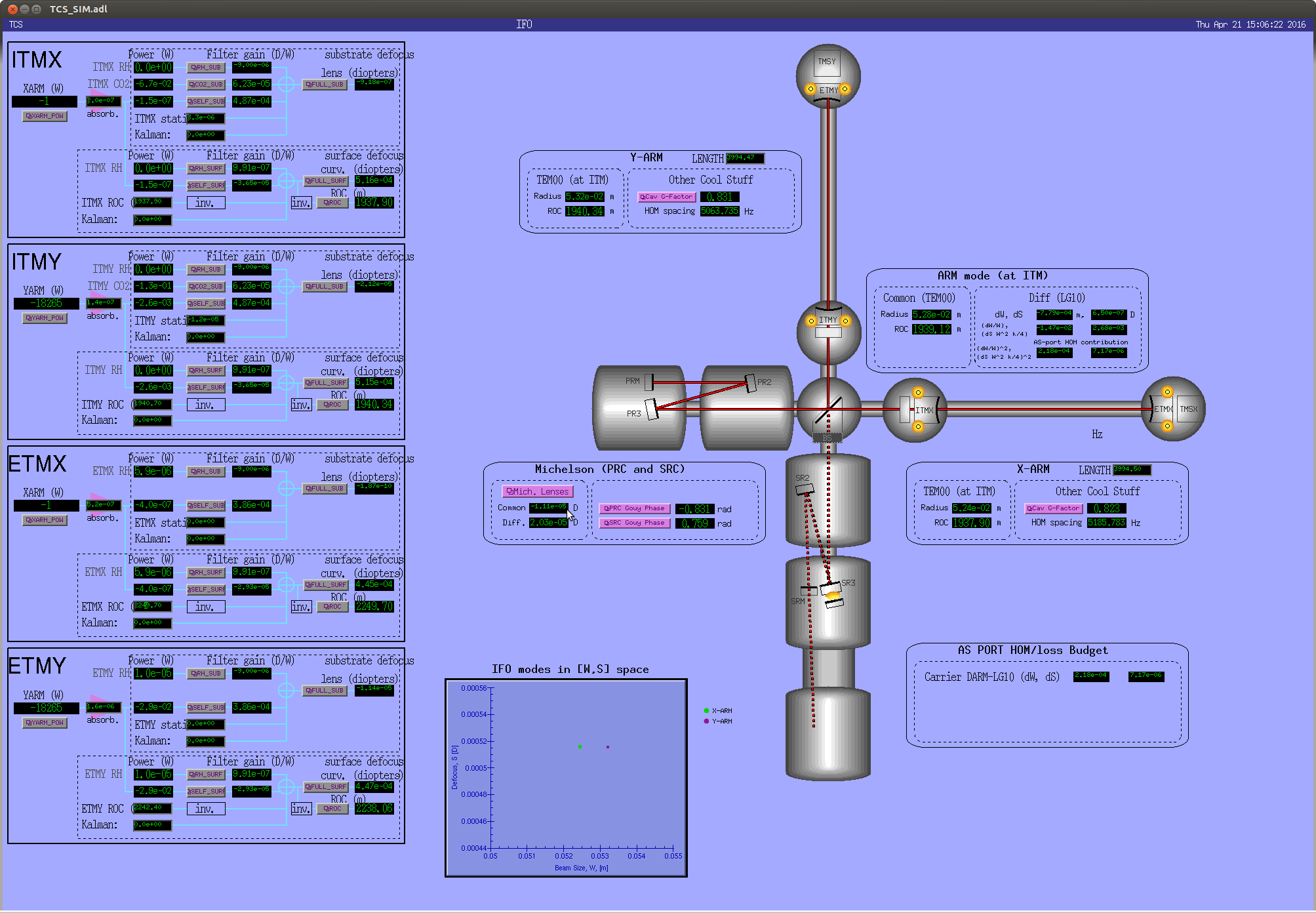Adaptive Optics
Return to all Research Topics
Adaptive Optics
Just as a piano can go out of tune due to changes in temperature and humidity, so too can the optical cavities of the LIGO detectors be poorly matched to each other. In future GW detectors, uncorrected mode-matching losses will severely limit the detector sensitivity due to the effect of decoherence on the quantum entanglement of the laser light. Adaptive optics are required to provide real-time changes to the optical state of the interferometer to compensate for static and dynamic mode-matching errors. They are the piano-tuners of the gravitational-wave world. In collaboration with colleagues at Syracuse and in Australia, we work on designing adaptive optics actuators and sensors, numerical and analytic models of the LIGO cavities and modern state-space controls techniques to operate these systems.
The following shows the motion of different modes in the beam-size/defocus phase space when a positive lens is applied to the SRM substrate:

Spatially resolved measurements of CO2 laser adaptive optics correction to the L1 X-arm input test mass:

Interface to an online simulation of the interferometer adaptive optics:
